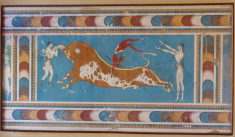Speaker
Description
Quantum measurements can lead to results that seem counter intuitive when we attempt to assign a classical meaning to the corresponding quantum observable. This is particularly apparent for joint measurements, which reveal global properties of a system while maintaining ignorance about some local properties. In the pigeonhole paradox, three quantum pigeons placed in two holes appear to each be in a different hole when measured in pairs, seemingly violating the pigeonhole principle. Here we present progress on an optical quantum pigeonhole experiment and show that the violation holds at all measurement strengths, including in the case where the measurement is so weak that measurement back-action cannot be used to explain the paradox. Furthermore we show how the results of the weak measurement follow a consistent sum rule which breaks down as the measurements become stronger and measurement back-action is more significant.
